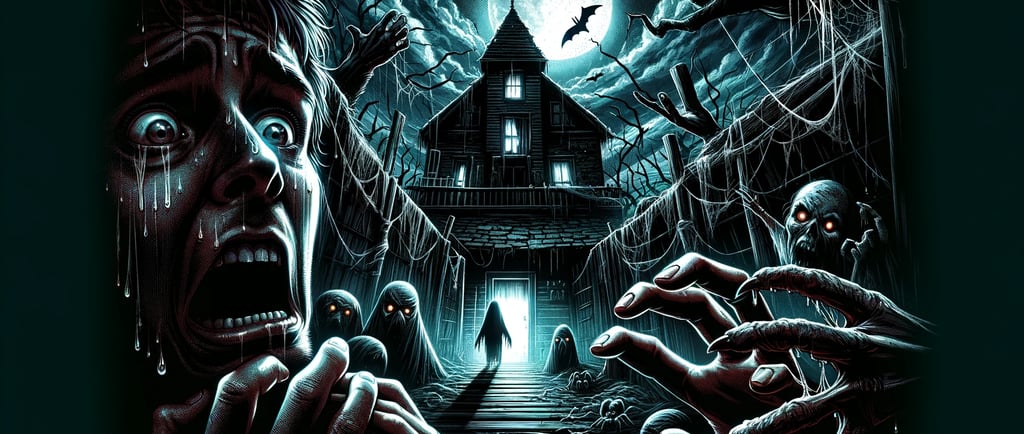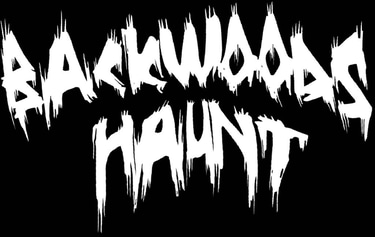
The Phobia Fear and Its Manifestation in Modern Haunted Houses
BackWoods Haunt
2/2/20242 min read



The Roots of Fear: A Survival Mechanism Gone Awry
At the heart of every phobia is the basic human instinct to survive. Our ancestors relied on fear to avoid real dangers, such as predators or natural disasters. However, in the absence of these ancient threats, these fears have evolved into phobias—intense, often debilitating, fears that are disproportionate to the actual danger posed.
Arachnophobia (Fear of Spiders): This common phobia is thought to originate from our ancestors' need to avoid venomous spiders. Despite the relatively small number of dangerous spiders, this fear persists, often amplified by the creature's eerie appearance and unpredictable movements.
Ophidiophobia (Fear of Snakes): Similarly, the fear of snakes is believed to have survival roots. Snakes, often venomous and sometimes lethal, were a real threat to our forebears. This phobia remains potent today, even in places where snakes pose little to no danger to human life.
Acrophobia (Fear of Heights): The fear of heights is another survival-based phobia. Avoiding high places prevented falls, a leading cause of injury and death in prehistoric times. This fear can trigger vertigo and a sense of imbalance, making high places feel even more perilous.
Claustrophobia (Fear of Enclosed Spaces): This fear may stem from our ancestors' need to avoid becoming trapped or unable to escape from predators. Enclosed spaces can evoke feelings of being restricted and out of control, a nightmare scenario for those afflicted.
From Primal Fear to Haunting Spectacle: Phobias in Modern Haunted Houses
Modern haunted houses tap into these primal fears, transforming them into sources of thrill and entertainment. By understanding the psychological roots of common phobias, designers create experiences that resonate on a deep, often subconscious level.
Spider and Snake Infestations: Utilizing arachnophobia and ophidiophobia, haunted houses often feature rooms crawling with spiders and snakes (real or convincingly fake). These encounters play on the deep-seated fears of venomous bites, tapping into evolutionary warnings that scream danger.
Vertigo-Inducing Vistas: To exploit acrophobia, some haunted attractions incorporate precarious walkways, bridges, or platforms that give the illusion of dangerous heights. This can disorient and terrify visitors, making every step a test of courage.
Claustrophobic Confines: Tight corridors, small rooms, and suddenly closing walls play on claustrophobia. These elements mimic the sensation of being trapped or suffocated, a fear that can trigger a visceral, panic-stricken response.
The Element of Surprise: Beyond specific phobias, haunted houses leverage the universal fear of the unexpected. Sudden noises, unexpected movements, and jump scares tap into the primal fear of the unknown, a reminder of the predators that once lurked in the shadows.
The Catharsis of Fear: Why We Seek the Haunt
Despite the discomfort—or perhaps because of it—people flock to haunted houses seeking the thrill that comes from facing these fears in a controlled environment. This experience offers a form of catharsis, allowing visitors to confront and temporarily conquer their deepest fears. The adrenaline rush, the relief that follows a scare, and the shared experience with friends or strangers alike make haunted houses a unique form of entertainment that not only celebrates but capitalizes on our most primal fears.
In the dance of shadows and screams that define the haunted house experience, we find a curious blend of ancient survival instincts and modern desire for thrills. By delving into the psychology of fear, we gain not only insights into our own phobias but also an appreciation for the artistry behind the scares. As the nights grow longer and the chill of October air sets in, haunted houses stand ready to welcome the brave, the curious, and the fearful—reminding us that sometimes, to find the light, one must first embrace the darkness. content


